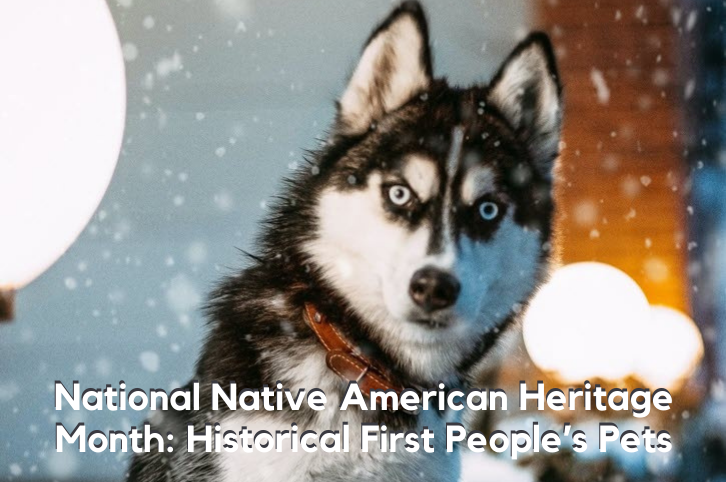November is National Native American Heritage Month. This month is a time to celebrate and honor Native American culture, history, and tradition. To do so, we wanted to take a moment to look back on the impact Native American history has had on pets and the human-animal bond as we know it today.
From Wild Animal to Pet
Throughout history, many wild animals have been domesticated by humans. Wild animals are tamed to provide a reliable source of food, labor, and occasionally entertainment. Over time, the animals become reliant on humans and are bred for specific characteristics. Native Americans’ deep connection with the world around them was vital in their successful domestication of many species, including llamas, turkeys, and guinea pigs.
Dogs were one of the first and most important animals domesticated by Native American people. A descendant of wolves, dogs were highly revered in Native American society. Throughout the years, the relationship between dogs and the Native American people continued to grow. This marked the transformation of dogs from a domesticated species to a pet.
While there are many historical pets of importance, the dog’s history in Native American culture has made the most notable impact on our relationship with pets today.
The Role of Dogs in Native American Culture
The study of burial sites, pottery, ceramics, and ancient paintings, has taught historians a lot about the vital role of dogs in Native American culture. Animals are often used to communicate values and spiritual beliefs. Each animal holds a different meaning and significance. Today, historians continue to learn about the importance of dogs through the myths and legends passed down from generation to generation.
When they were first domesticated, dogs filled a variety of roles. Some dogs were bred as hunters, while others stood guard as protection. In some cases, dogs were even used as a means of transportation, hauling heavy loads of goods.
While these roles made them a valuable part of Native American society, the dog’s most important job was as a companion. As pets, dogs became part of the family. They developed close bonds with their owners and were well taken care of. Dogs were so highly valued that they were often buried with the family and even believed to guide people in the afterlife.
The Impact History has Played on Pets Today
As the importance of pets in Native American culture continued to grow, so did the focus on pet care and animal health. This trend has been seen worldwide as humans develop a closer bond with the animals around them. The first known records of veterinary practice date back to 1900 BC. However, it is believed that veterinarians were around long before that.
Today veterinarians continue to improve the human-animal bond by promoting animal health and welfare. Advancements in medicine have allowed pets to live longer and enjoy a better quality of life.
Final Thoughts
We hope you enjoyed this historical look at pets as we celebrate Native American Heritage Month. As we continue to think about our pet’s future, we must remember the role Native Americans have played in shaping our relationship with animals.
Sources:
https://www.worldhistory.org/article/1549/a-brief-history-of-veterinary-medicine/
https://www.petplace.com/article/dogs/pet-behavior-training/the-history-of-dogs-and-native-americans/
Image credit: Pexels


